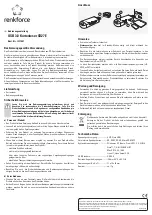
ATM Technology
21
LANE provides:
The ability to find an ATM address corresponding to a given MAC address,
Support of multicast and broadcast addresses.
For doing that, LANE implements three servers:
LAN Emulation Server (LES) that maps MAC addresses to ATM addresses.
LAN Emulation Configuration Server (LECS) that gives clients (LEC) the information required to reach
the appropriate LES,
Broadcast and Unknown Server (BUS) that deals with transmission of broadcast, multicast or unknown
packets in a similar way as a bridge does.
All of these servers and clients connect to each other using SVC's or PVC's. The LEC's convert Ethernet or
Token-Ring frames into cells and send these cells over the virtual circuits.
Suppose that a station wants to access a file stored on a server. If the LEC of the station does not know the
ATM address of the server, it queries its LES, which returns the information. Then the LEC of the station is
able to set up a SVC to the LEC of the server.
If the LEC of the station does not know its LES, it queries the well-known LECS, which returns the LES
ATM address.
If the LES does not know the server ATM address, it queries the BUS, which in turn queries all the LEC in the
network in order to discover the server.
LANE Disadvantages:
The communication between emulated LANs requires routers.
No QoS is provided.
LANE Advantages:
LANE enables non-ATM aware protocols and applications to connect without modifications.
Connectionless LAN traffic is well supported.
Broadcasts and multicasts traffic are supported.
The network configuration is flexible.
RFC2684 Bridge
Ethernet traffic can be encapsulated in ATM AAL5 packets according to RFC2684. This is mostly used by
ADSL modems. The subscriber-side ADSL modem can connect to an Ethernet LAN.
There are two methods for carrying Ethernet PDU's over an ATM network.
The "
LLC
Encapsulation" method allows multiplexing of all protocols over a single ATM VC. The protocol
type of each PDU is identified by a prefixed LLC header. In some cases, the LLC header must be followed by
a
SNAP
header.
In the "VC Multiplexing" method, each ATM VC carries PDU's of exactly one protocol type. When multiple
protocols need to be transported, there is a separate VC for each
.




































